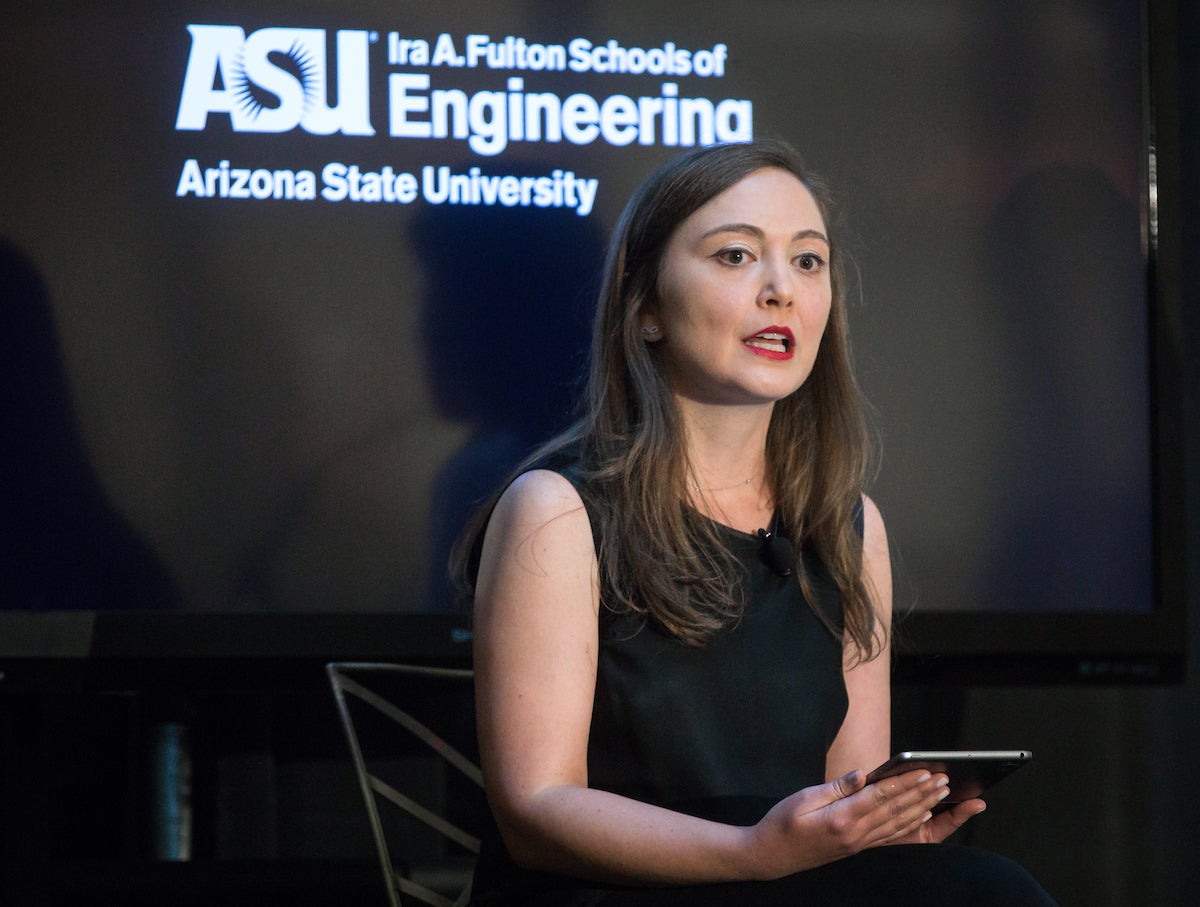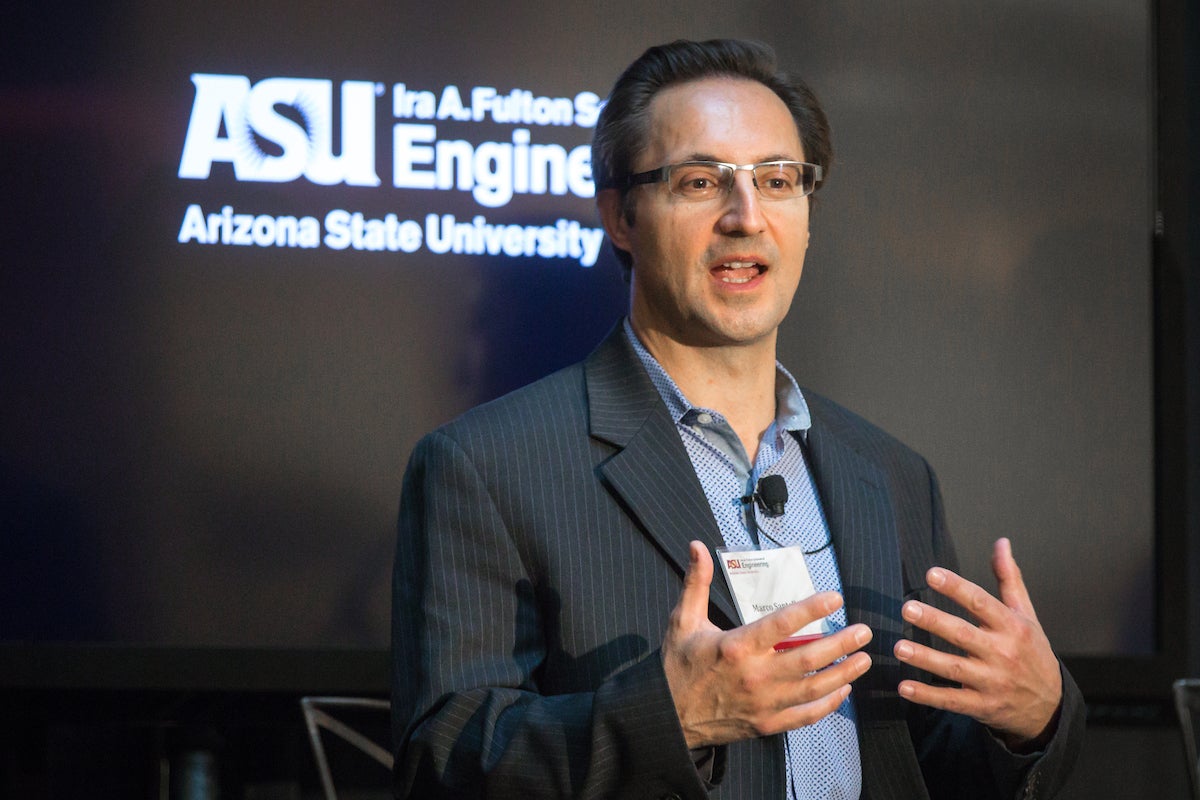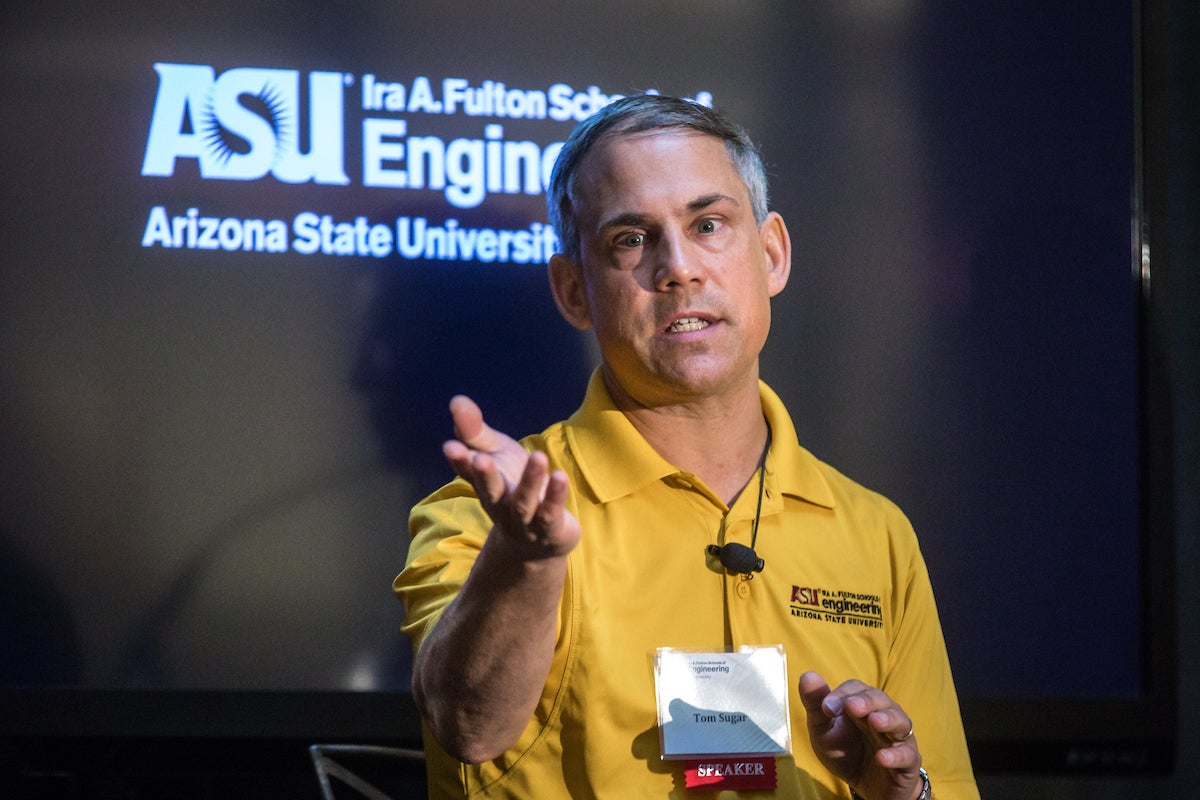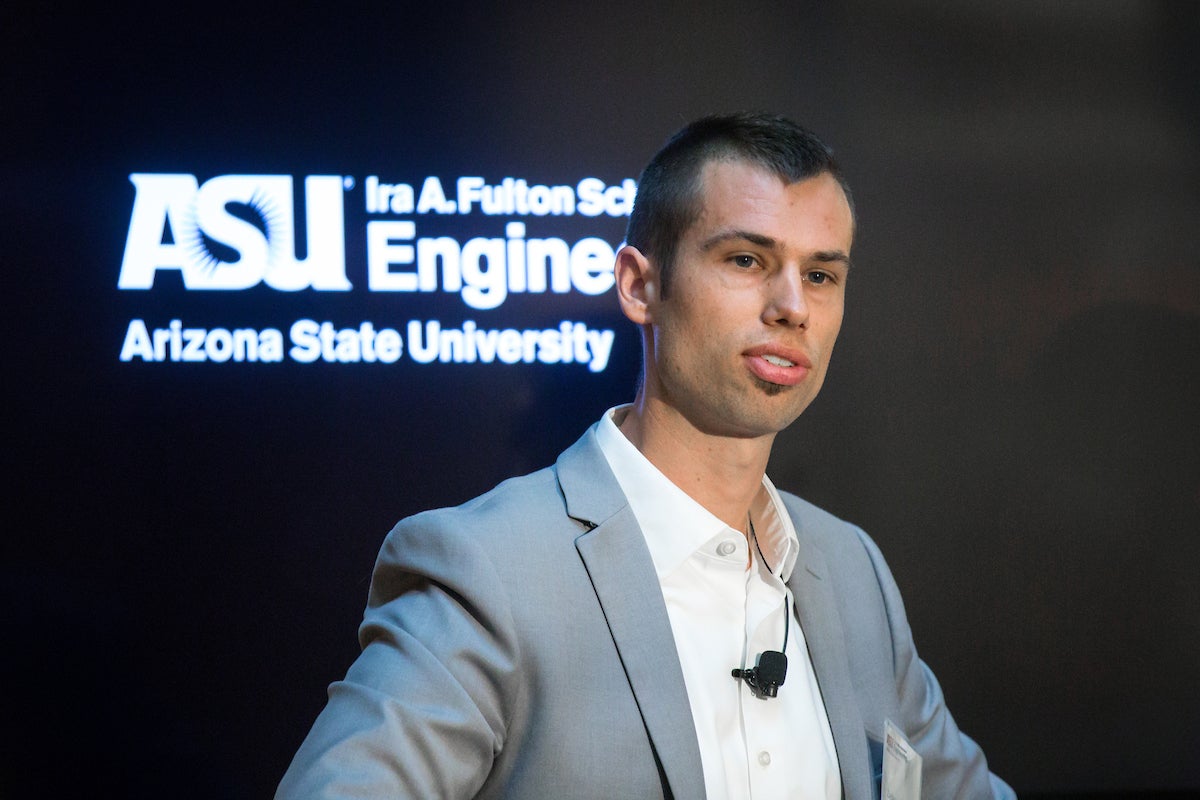Business, meet Arizona State University’s engineers. This is what we can do for you.
That was the intent behind “Engineering the Future: Entrepreneurship, Partnerships and a Commitment to Innovation,” an event held Tuesday to introduce and promote collaboration between industry and the Ira A. Fulton Schools of Engineering.
The Phoenix Business Journal co-sponsored the event.
“We wanted to share with you some of those factors that make us number one in innovation,” moderator Ji Mi Choi, associate vice president of Strategic Partnerships and Programs, Office of Knowledge Enterprise Development, told the crowd of about 200. “We do invite partnership with you.”
Engineering Dean Kyle Squires told attendees the school looks forward to following up with them.
“We want to hear from you, companies and organizations we can move forward,” Squires said.
Nadya Bliss
Four engineering professors introduced and discussed their work.
Nadya Bliss, director of the Global Security Initiative and a professor in the School of Computing, Informatics and Decision Systems Engineering, discussed cybersecurity. With ever more devices, vehicles and facilities connected to the internet, there is simply more surface to be attacked, she said.
“Listen to computer scientists,” Bliss said. “We know what we’re talking about.”
Bliss suggested that, in her case, long-term projects with clearly defined goals are a good fit.
Marco Santello
Marco Santello, director of the School of Biological and Health Systems Engineering, studies how the brain controls and learns movements.
He is working with partners, including the Mayo Clinic and roboticists, on the unmet needs of amputee patients.
Thomas Sugar, a robotics engineer and associate professor in the Polytechnic School, also works on improving mobility with orthotics and prostheses for stroke victims.
“Robotics is blazing right now,” Sugar said. “I’ve never seen it so hot.”
Thomas Sugar
He cited 18 roboticists hired by the university. Sugar also works on wearable robotics for industry, which allow people to work longer and with less physical strain.
Iron Man suits aren’t happening, said Sugar.
“They’re too big and too expensive,” he said. “What’s really happening are these small systems that improve mobility.”
Zachary Holman, an assistant professor in the School of Electrical, Computer and Energy Engineering, works on silicon solar cells, solar power storage and efficiency. He recently set an efficiency record for solar cells.
ASU has 10 faculty working on solar technology. (Most universities have one, according to Holman.)
Zachary Holman
Holman co-founded Swift Coat, an ASU spin-off company that deals with nanoparticle coating and is a finalist in the ASU Innovation Open.ASU has 10 faculty working on solar technology. (Most universities have one, according to Holman.)
“We’re well-versed in the process of talking to companies,” he said.
Sergio Gazic, bioscience portfolio manager at the Arizona Commerce Authority, asked the panel what the biggest challenge of starting a company and taking inventions to market is.
Marketing and sales are difficult, Sugar said. “Just because you have the best technology doesn’t mean it’s going to get sold,” he said.
Engineers don’t know business, Holman said, leaving them with two options: learn business themselves, or partner with someone who is knowledgeable.
A representative from an architecture firm asked the engineers if they work with artists or architects.
Holman said he found flat panels on roofs unattractive, and asked to meet with her after the event.
In addition to faculty speakers, the "Engineering the Future" event Tuesday featured displays promoting some of the work at the Ira A. Fulton Schools of Engineering. Photo by Charlie Leight/ASU Now
Top photo: Panelists (from left) Nadya Bliss, Marco Santello, Thomas Sugar and Zachary Holman and moderator Ji Mi Choi answer questions at "Engineering the Future: Entrepreneurship, Partnerships and a Commitment to Innovation" at ASU's ISTB 4 building on Tuesday in Tempe. Photo by Charlie Leight/ASU Now
More Science and technology

ASU postdoctoral researcher leads initiative to support graduate student mental health
Olivia Davis had firsthand experience with anxiety and OCD before she entered grad school. Then, during the pandemic and as a result of the growing pressures of the graduate school environment, she…

ASU graduate student researching interplay between family dynamics, ADHD
The symptoms of attention deficit hyperactivity disorder (ADHD) — which include daydreaming, making careless mistakes or taking risks, having a hard time resisting temptation, difficulty getting…

Will this antibiotic work? ASU scientists develop rapid bacterial tests
Bacteria multiply at an astonishing rate, sometimes doubling in number in under four minutes. Imagine a doctor faced with a patient showing severe signs of infection. As they sift through test…





